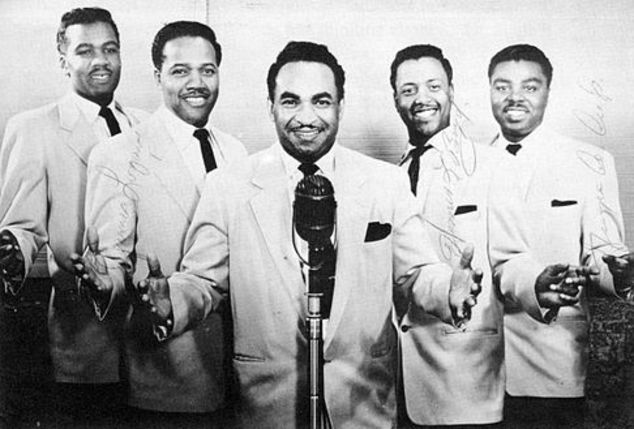
The Philharmonics made history in Downtown Springfield
February 25, 2021
The Philharmonics took the stage at The Grand Ole Opry, shared a tour poster with Elvis Presley, sang with famed gospel singer Mahalia Jackson and dined with President Harry S. Truman. They were also the first Black castmembers to appear regularly on a nationally-broadcast TV show in the United States.
And they got their start right here in Downtown Springfield. We conclude our Black History Month series by honoring Homer “Jolly” Boyd, George Culp, James Logan, Elbridge “Old Man” Moss and Clarence “Chick” Rice, known collectively as The Philharmonics.
Church choir beginnings
Gibson Chapel Church is where “The Phils” met each other and started performing together, as members of the church choir. Versatile and talented, The Philharmonics sang gospel, R&B, pop and even country and western music. Whatever the crowds wanted to hear, they could perform. The quintet was admired for its splendid harmonies, choreography, colorful wardrobe and impeccable stage presence.
In the early 1950s, they twice won a talent show on CBS, “The Original Youth Opportunity Program,” and toured with the show, which featured young performers from across the country. That set the stage for their appearances on the famous “Ozark Jubilee,” which originated from the Jewell Theatre Downtown, at the intersection of Jefferson and McDaniel.
The Ozark Jubilee
The Philharmonics sang their own songs and provided background vocals for many of the country music stars on “Ozark Jubilee.” They also appeared on ABC’s “The Eddy Arnold Show” in 1956 and briefly had their own local show on KYTV. The Philharmonics recorded on the Cardinal Records label and their singles included “Teen Town Hop” and “That’s Why I’m Losing You.”
And they accomplished all this despite dealing with an incredibly negative racial climate. While touring the country, The Philharmonics had to be careful to find hotels, restaurants and performance venues that weren’t segregated. They overcame these obstacles to become one of the first musical acts from Springfield to make it big. The Philharmonics continued to perform into the 1980s. Their last performance was held at Gibson Chapel in 1984.
Homer Boyd, Springfield icon
Boyd, who died in 2016, was a Springfield native, born and raised close to Silver Springs Park. Always an entertainer, Boyd took up tap dancing at a young age. He played drums and was the drum major for the Lincoln High School band in Springfield, back when schools were segregated. Boyd joined the U.S. Army and served in Korea, then rejoined The Philharmonics. He and his wife Betty moved away in the 1960s, but — after retirement — moved back to Springfield in 1995.
There the Boyds rejoined the Gibson Chapel Presbyterian Church and were active as volunteers. Homer didn’t just live history, he also shared it. He was regarded as a compelling storyteller and was often sought out by historians who wanted to know more about life in Springfield from the 1930s to the 1950s. He donated a great number of photographs to the History Museum on the Square, including an exhibit titled “Pieces of Dreams: The African-American Community in Greene County.” Boyd also contributed to the Greater Springfield Route 66 Oral History Project.
Want to learn more about The Philharmonics? Check out the History Museum on the Square. You can also find videos of The Phils on YouTube.
